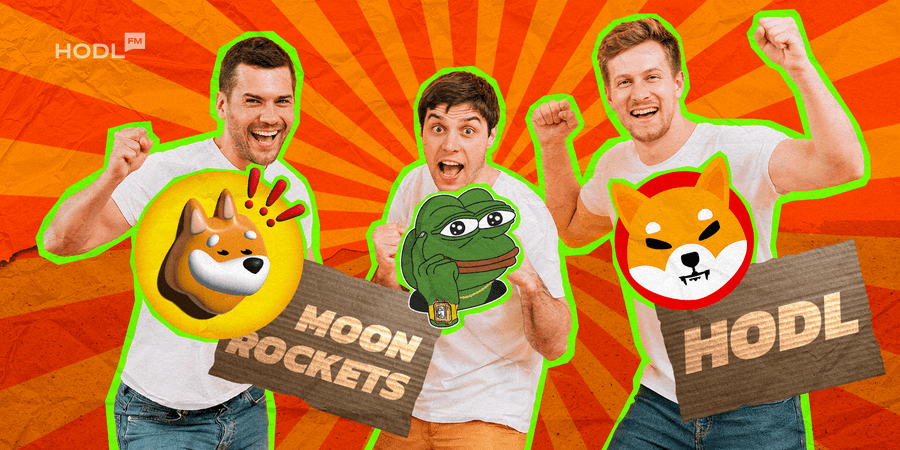You could be forgiven for believing that all that mattered in crypto was the price tag of Bitcoin or that we were still living in the pre-blocksize wars when everyone was trying to make the biggest, baddest, and fastest L1 blockchain. Especially this year, where most of the narrative has surrounded the approval of Bitcoin ETFs in the U.S. Read also about Hong Kong’s Crypto ETF Debut
Yet, despite the belief and ongoing reporting that the “adults” and institutional money have finally entered the space, it is L2s that are stealing the spotlight. After breaking its previous ATH at the end of February, Bitcoin’s price volatility has remained relatively stable and somewhat lackluster compared to the surge in L2s.
The Surge of L2s
The past year has seen a face-melting level of liquidity pour into the L2 marketplace. While L1s were fighting amongst themselves about who would take the silver medal behind Bitcoin, L2s quietly more than tripled the TVL of the entire L2 market.
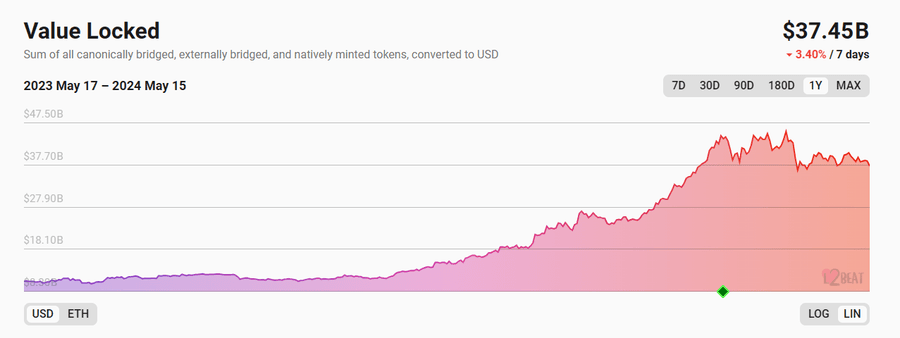
Let’s take a look at some of the L2s that are leading the charge behind this surge.
 Arbitrum One
Arbitrum One
Driving this surge in L2 usage has been Arbitrum One. A general-purpose Optimistic Rollup built by Offchain Labs, Arbitrum One commands a little over 40% of the TVL on L2s. Its universal design offers an affordable and scalable way to execute smart contracts that are compatible with Ethereum.
As long as Ethereum remains the dominant blockchain for dApps and Solidity as the preferred coding language among developers, Arbitrum One’s dominance looks to be firmly entrenched.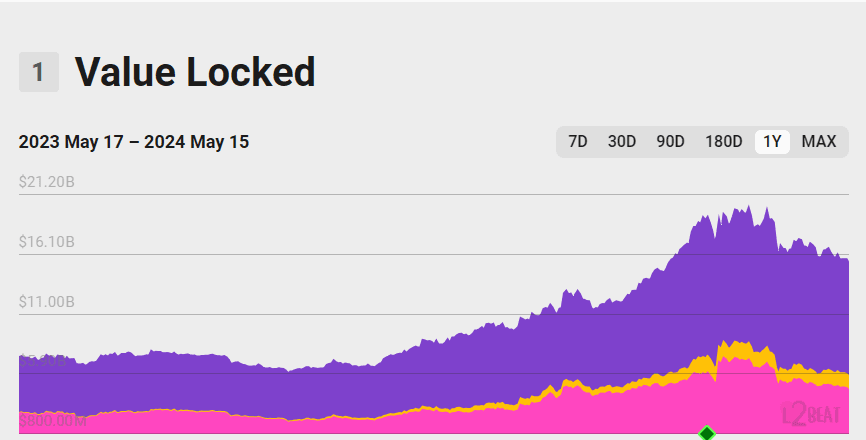
 Base
Base
Base is the new kid on the L2 block, having only launched last summer. However, despite its infancy, it has made a significant impact on the L2 marketplace by capturing 14% of the market share in that time. This is unsurprising, considering Base was developed and funded by Coinbase’s big daddy CEO Brian Armstrong.
Base is designed to improve scalability, performance, and interoperability when leveraging Coinbase’s products while reducing transaction costs and settlement time on the Ethereum network. Considering that Coinbase has over 100 million users worldwide who can leverage the Base L2 network, it is no surprise that it is on this list.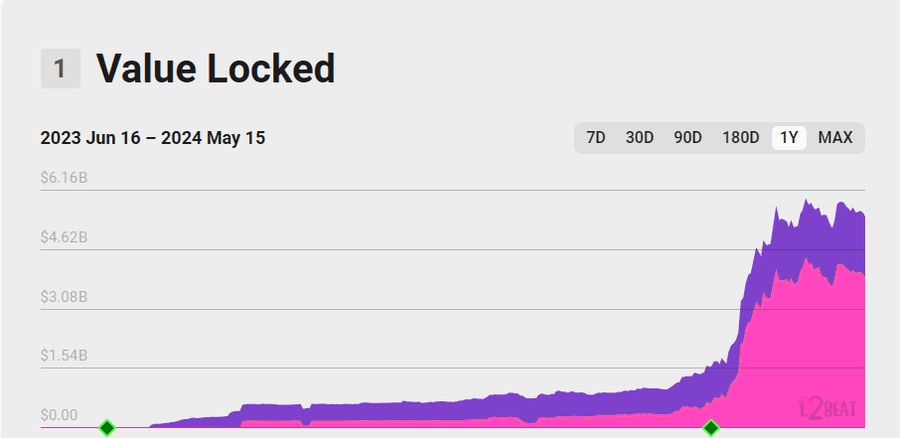
 Linea
Linea
Linea is the first ZK Rollup to make this list. Another relatively junior project, having only launched in July of 2023 by Ethereum Co-Founder Joseph Lubin. It leverages the power of zero-knowledge proofs to validate transactions off-chain and submit a cryptographic proof to the Ethereum mainnet, achieving high throughput and low gas fees.
So far, it has been able to capture just over 2% of the L2 market, but it is among the leading ZK Rollups in the space, which is considered particularly valuable to those developers prioritizing privacy.

 Blast
Blast
Blast is different from the other L2s on this list. It is an EVM-compatible Optimistic Rollup that supports native yield. In other words, through the Blast L2 blockchain, users can either stake ETH or deposit native assets like USDC, USDT, and DAI onto the Blast ecosystem. Blast then uses the blockchain’s liquidity and returns these native tokens to the holder with interest. The protocol effectively generates automatic interest for the users.
The Blast Mainnet went live on Feb 29th and has since taken over 7% of the L2 market.
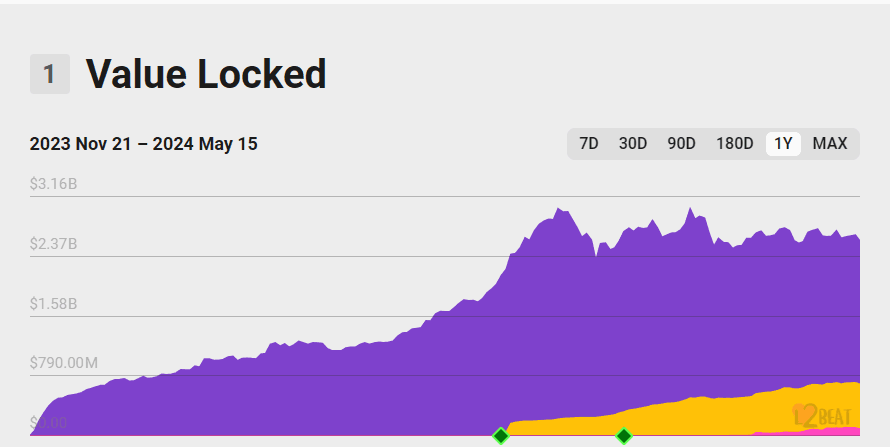
Most L2s that have excelled in the recent run-up have focused on offering scaling solutions for L1s. Scaling has been one of the elusive problems in blockchain technology. Vitalik identified it early in 2017 when he introduced the concept of the blockchain or scalability trilemma. In it, Vitalik claimed that every blockchain would inevitably have to sacrifice one of the following three attributes in favor of the other two: Security, Decentralization, and Scalability.
It is no surprise that as more and more users are onboarded and more micro-use cases are discovered for blockchain technology, L2s focusing on solving the scaling problem will thrive. Blast is an outlier on this list, but its recent success suggests the market is ready to dip its toes into the real-yield swimming pool.
What is driving this latest surge in L2 activity?
While there is no doubt that the recent surge in L2s has caught many observers by surprise, when we dig a little deeper, we start to see what the driving forces are behind the run-up. It is not what anyone would have thought.
Memecoin Mania
One of the more bizarre and unexpected twists of this latest surge has been the revival and explosion in popularity amongst meme coins. This is what we can only describe as a meme coin measuring contest (My meme is bigger than your Meme) where every day, a thousand new Memecoins are minted, surge in price, and die like mayflies in summer. It is like roulette on steroids, where you try not to be the last one holding a bag of nonsense.
Surprisingly, much of the liquidity pouring into the space appears to have VC backing. As L1s struggle to adapt to this surge in the volume of transactions on the Mainnet, many projects are looking to L2s as a solution.
So grab your cat and the nearest inanimate object and start minting the hottest new meme coin.
More about Memecoins:
#PoliFi Memecoins: The Impact of Political Events
Market conditions
Yet, what ultimately underpins any movement in the market is the global macroeconomic events going on in the world. The global markets are still recovering from what feels like a generation’s worth of trauma unleashed in the first couple of years of COVID.
The last couple of years saw inflation soar, followed by central banks raising interest rates, causing cheap, accessible capital to freeze up. As inflation finally started retreating to historical averages this year, VCs have started pricing in potential rate cuts and are looking to make up for lost time.
Despite inflation remaining sticky and the projected rate cuts taking longer to come through, VCs are comforted by the fact that there is little chance for any more increases in the near term.
As for the meme coin casino, even if the mania begins to subside, L2s are well positioned for the next bull run and wave of adoption. Scaling matters in the world of processing smart contract transactions, regardless of whether they are financial payments or merely sending a Dog NFT to your friend.
